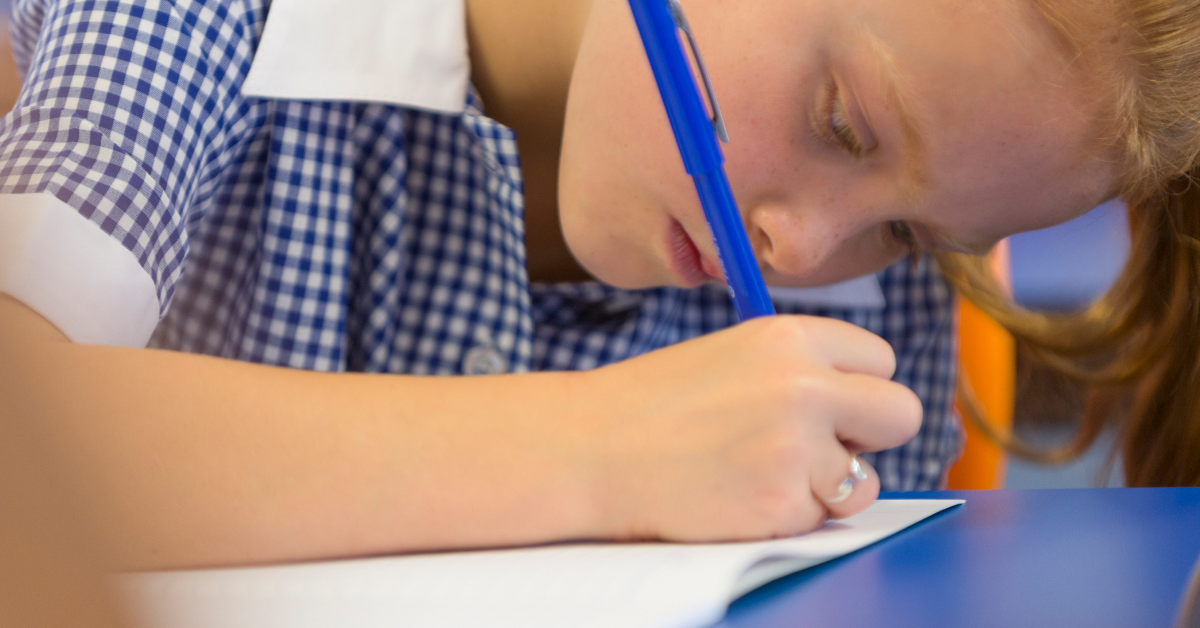
All students need to be given more opportunities to write and to write more. This is particularly important for primary school students who are in the early stages of developing their writing skills.
Young writers can struggle with putting their ideas down on paper. A blank piece of paper can be daunting. The student can get lost when juggling the required information, the structure of the sentence and the intent of the exercise. There are, however, three steps students can take to make it easier to turn their thoughts into words.
1. Identifying writing skills
Language is the way that it is because of the job that it does. Students who start a writing exercise by identifying which writing skill they should be demonstrating will find the task easier, and will produce better work.
When developing How to write what you want to say… in the primary years, authors Catherine Black and Patricia Hipwell identified the kinds of writing skills expected of primary school students. These writing skills are often indicated by key task words, verbs or cognitive verbs. Whatever name they are called they are common skills that familiar to teachers and students.
The skills prescribed by the Australian Curriculum include:
|
|
|
Sometimes the intent of the question is indicated by a word or phrase other than those listed above. How to write what you want to say… in the primary years includes task words that have a similar intent to the skills in the book.

2. Planning with graphic organisers
Once the writer has identified the intent of the writing, they can plan what they want to say. One of the best ways for a student to plan their writing is to use a graphic organiser that matches the writing skill they need to demonstrate.
A graphic organiser is valuable for planning writing or checking the content and structure of work before drafting. It is also a fantastic scaffolding tool for writing.
If a student has been asked to write a summary, they could begin by using a Summarising Hand Organiser to identify the key points.
logonliteracy’s hand organiser asks students to answer the question, “I am writing a summary of…” to help them focus on the task. Students then write down a key point in each of the five fingers on the hand.
Students asked to outline Government in Australia could use the hand organiser like this:

At a glance, the teacher can check if the students have the key points and if they have enough information for their summary.
Both How to write what you want to say… in the primary yearsand our graphic organisers also include prompt questions to help students work through the task. Not only do these questions help students complete the planning exercise, they also allow students to check their work before they begin writing.
This planning, using graphic organisers, reduces the cognitive load on students. When it comes to writing, the ideas are already clearly set out, so they can focus on the how of writing, not the what.
3. Using sentence starters and connecting phrases
Once the young writer knows what they want to say, it’s time to put the ideas into words. Similar to each book in the series, How to write what you want to say… in the primary yearsoffers a list of sentence starters and connectives for each key task word to help students flesh out their ideas into sentences.
Our student is writing a summary about Government in Australia have already identified five key points. By turning to the lists of sentence starters and connecting words in the book, they can easily take the next step. In the example below, the sentence starters are in bold text and the connecting words are in italics.
In summary, Australia has three levels of government - local, state and federal. Overall, each level of government holds elections, makes laws for citizens, provides public goods and services, and punishes those who break their laws. Generally speaking, each level of government has particular responsibilities. Firstly, local government is responsible for providing services within the local area, including the maintenance of roads and footpaths; garbage collection; town planning and building regulations; libraries; and maintenance of parks, gardens and swimming pools. In a nutshell, state government is responsible for education, health, transport, natural resources, the environment, law and order and emergency services. Finally, the Federal Government is responsible for things that affect the whole of Australia, including defence, mining, trade, airports, post and telecommunications, social services, Medicare and currency. From the information, we found out that government in Australia is complicated.
Example from How to write what you want to say… in the primary years, p51.
While breaking a writing task down into three steps may initially appear to create more work, this approach makes writing easier for primary school students. It also helps students produce writing of greater accuracy, length and depth.
How to write what you want to say… in the primary yearswalks primary school students through each of these three steps providing parents, teachers and students with a valuable tool for improving writing.
Each of the sections are aligned with skills prescribed by the Australian Curriculum, and offers relevant prompt questions, graphic organisers, examples, sentence starters and connective language.
Back to school special





